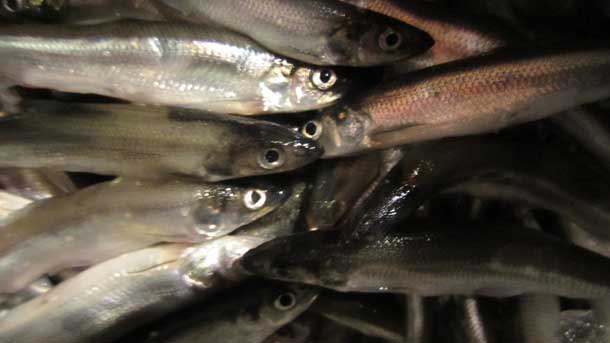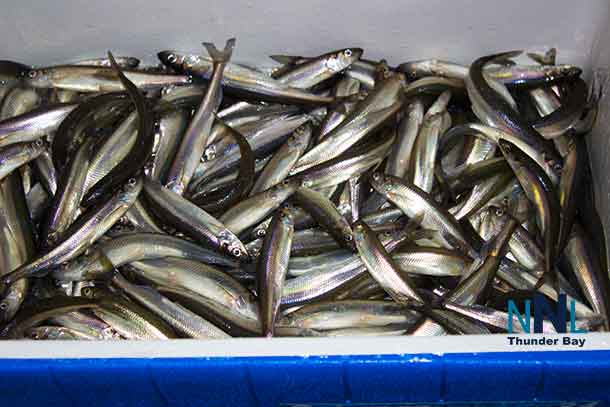
WEST LAFAYETTE, Ind. – ENVIRONMENT – The reasons for the dwindling population of smelt prey fish in the Great Lakes to near historic lows are more complicated than previously believed, new research from Purdue University and collaborators suggests.
Although results of the 2014 study show that the number of smelt surviving their first few months actually has been rising since 2000, the increase in hatchlings isn’t producing more adults. Whatever the cause, the loss of adult rainbow smelt is keeping the population on a downward trend even as offspring survival improves.
Perhaps the most surprising finding is that offspring survival is on the rise in Lake Michigan despite the fact that their parents are on average about 2 inches shorter now than what they were in the 1970s, dropping from about 6.5 inches in length to about 4.5.
“We were expecting to see a decrease in productivity because the adults are maturing at smaller sizes, which should mean fewer eggs and less healthy hatchlings,” said lead author Zach Feiner, a Purdue doctoral student of Tomas Höök, associate professor of fisheries and aquatic sciences. “This raises a lot of questions about how well we understand rainbow smelt fisheries.”
The researchers, including from the U.S. Geological Survey, Illinois-Indiana Sea Grant and the U.S. Environmental Protection Agency’s Great Lakes National Program Office, discovered the unexpected increase in offspring after analyzing about 40 years of fisheries data using a novel modeling technique.
The researchers speculate that the drop in the number of adult smelt may actually be allowing hatchlings to thrive. Adult rainbow smelt frequently supplement their diet of zooplankton by eating their offspring. Fewer adults means fewer predators for juvenile smelt.
The need to find food in a lake infested with millions of quagga and zebra mussels that filter out plankton may be driving adults further out into the lake and away from spawning grounds, the researchers said.
Fish populations typically are analyzed using a statistical model that assumes the relationships among variables, such as number of offspring, number of adults, degree of predatory pressure and amount of rainfall, remain the same over time.
For this study, researchers used statistical tools rarely used by fishery scientists that better reflect the ever-changing nature of the Great Lakes and make it possible to detect more subtle population patterns.
Rainbow smelt are prey fish in each of the five Great Lakes, providing an important food for walleye, lake trout and stocked salmon species. Smelt also are predators to other species. The researchers said fluctuations in the abundance of rainbow smelt, therefore, can potentially influence multiple levels of Great Lakes food webs.
In Thunder Bay in 2013 there was an amazing smelt run especially on the Current River.


